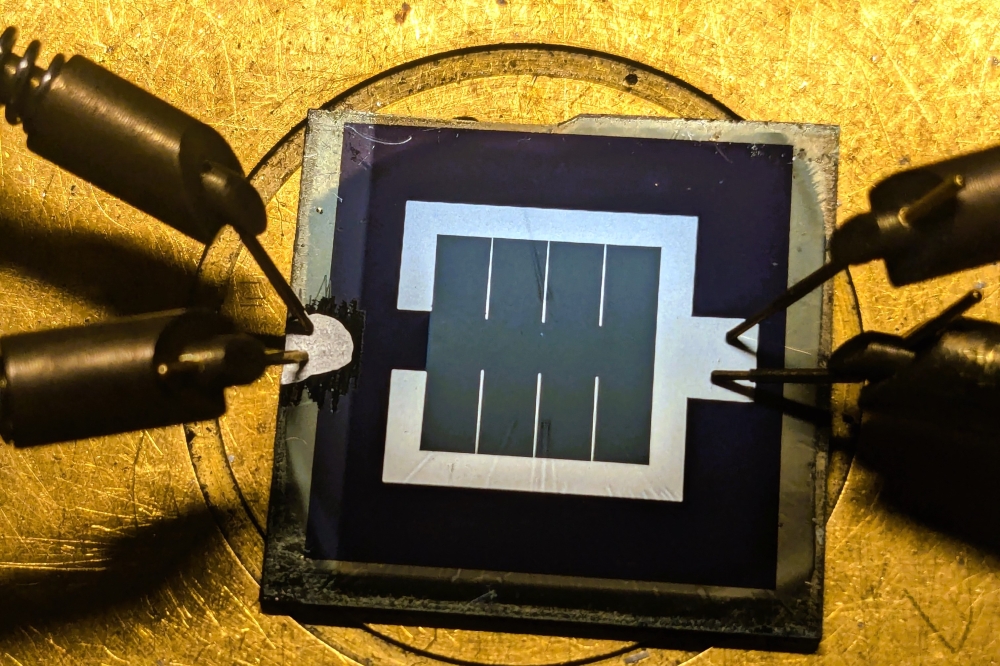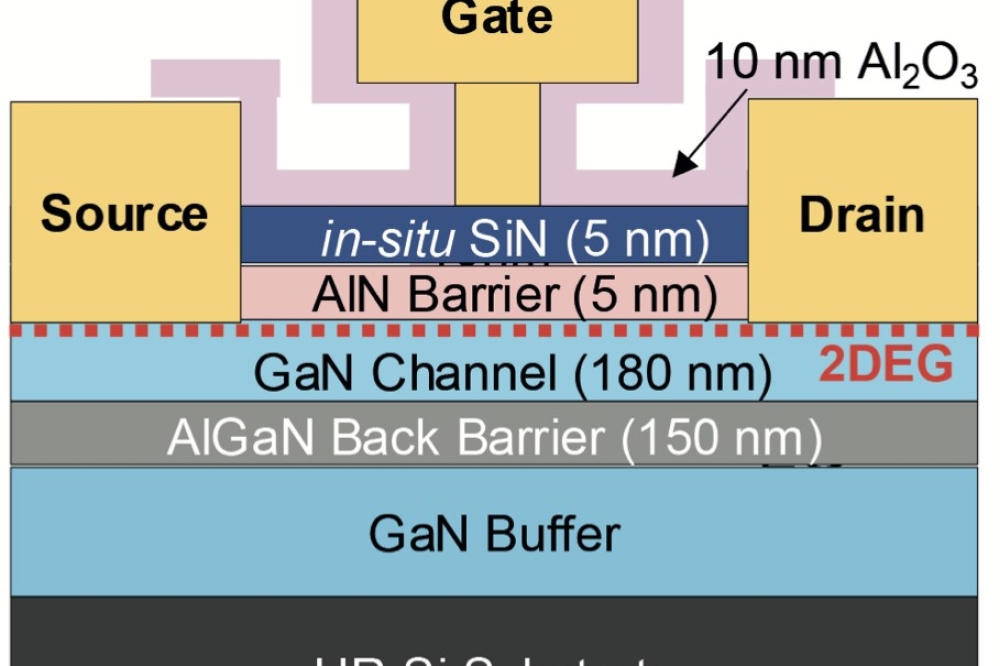THz waves used to evaluate GaN quality
![]()
Figure a) shows that near the surface, the energy band is bent due to the surface potential. It is thought that photoexcited carriers are accelerated by the band bending, thereby radiating THz. It is also thought that the change in THz wave emission intensity due to defects, as shown in Figure b), is because the energy band is bent significantly due to electrons trapped by defects near the surface, which further accelerates carriers.
A group of researchers at the Institute of Laser Engineering at Osaka University led by Iwao Kawayama, working with the company Screen Holdings, has succeeded in visualising changes in defect density on the surface of GaN using a laser terahertz emission microscope (LTEM) which measures THz waves generated by laser emission.
The group says its discovery shows that LTEM is useful as a new method for evaluating the quality of wide-gap semiconductors and expects that LTEM will bring a breakthrough in the development of next-generation optical devices, super high frequency devices, and energy devices.
The group examined the intensity distribution of THz generated by radiating ultraviolet femtosecond laser pulses on the surface of GaN crystal through LTEM. As a result, it was found that there were regions with high intensity of THz emission and ones with low intensity of THz emission.
Additionally, when the LTEM image was compared with the image obtained through photoluminescence (PL) using a conventional method, it was found that there was a strong correlation between the distribution of emission intensity due to lattice defects and the intensity distribution of THz wave emission.
Furthermore, from results measurement through modification of excited lasers, it was confirmed that THz emission needs excitation light with larger energy than the band gap energy.
'Visualization of GaN surface potential using terahertz emission enhanced by local defects'; Scientific Reports 5, 13860 (2015)


































